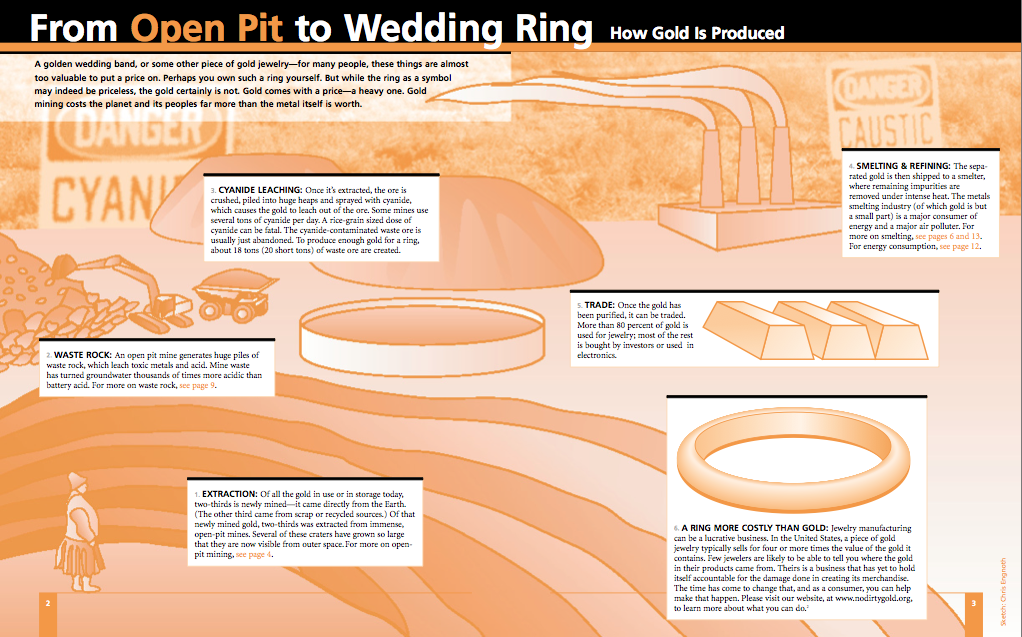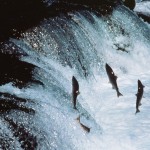Several weeks ago, the EPA made the rare decision to use their authority and the Clean Water Act to pause permitting for the Pebble Mine and begin the process of permanently halting the construction of the mine. However, Alaskan senator Lisa Murkowski recently cosponsored a senate bill called the “Regulatory Fairness Act”, which would prohibit […]
Category Archives: Reflections
Pebble Mine Continues to Lose Support
It was recently announced that a mining company, Rio Tinto, plans to pull out of the Pebble Mine project. Rio Tinto was one of the last large mining companies with remaining investment in the mine, owning a 19% share. Rio Tinto is not the first major company to retract support- last September the Anglo-American Corporation, […]
Ecosystem-Based Management and Keystone Species
According to the Ecosystem-Based Management Tools Network, ecosystem-based management (EBM) “considers the whole ecosystem, including humans and the environment, rather than managing one issue or resource in isolation.” But one of the key aspects of EBM is listed as “Incorporating understanding of ecosystem processes and how ecosystems respond to environmental perturbations.” When it comes to Sockeye […]

Mining under the Microscope
The protests against the Pebble Mine are not exactly unfounded. Historically mines, especially gold and copper mines, have been very destructive to the environment and the people who rely on them. Earthworks and Oxfam America published a report on the negative effects of mining called Dirty Metals: Mining, Communities and the Environment. Included in the beginning of the report is the diagram of the gold mining and refining process seen below.
The processes behind the mining of copper and gold are not at all efficient. The report states that only .51 percent of ore mined for copper is actually usable metal, and only .00001 percent of ore mined for gold. But it is not only the inefficiency of mining these metals that leads to environmental degradation. It is estimated that mines in the United States are responsible for more than 90 billion tons of waste ore. The chemicals involved in the process are dangerous for the environment too. The way that gold is extracted is by spraying cyanide, which bonds with the gold, onto crushed ore and then chemically separating the two. The remains of this process are called tailings, a mixture of crushed rock, water, and chemicals. These tailings are stored in on-site tailing dams, which are often structurally unsound. Tailing dam failures are responsible for about 75 percent of major mining accidents over the past 25 years.
Considering all of these threats, and the fact that it takes only 1 millionth of a gram (or 1 microgram) of cyanide per liter of water to kill a fish, the people who rely on the rivers near the Pebble Mine have a right to be concerned. Mining is not an industry that has a history of low environmental impact, and despite promises the Pebble Mine has the potential to cause severe damage to the Sockeye Salmon runs in Bristol Bay.
References
http://www.oxfamamerica.org/static/media/files/dirty-metals.pdf
http://farm4.staticflickr.com/3774/8904048841_a7834d10ee_o.jpg
Understanding the Importance of Salmon
Bristol Bay is a very controversial area as government agencies are pitted against each other and environmentalists battle with industrialists. The Pebble Mine will provide over 1000 long-term jobs, increasing Alaska’s mining workforce by almost 25%. So why then are the locals so against this development? What makes salmon so special? Pacific salmon are […]
Fishing for Profit, Fishing as People
In a 2005 letter to then-Governor of Alaska Frank Murkowski, the Alaska Independent Fishermen’s Marketing Association (AIFMA) made the following statement: We urge you to immediately oppose the proposed Pebble Mine and all large-scale mine develop- ment in the Lake Clark, Iliamna-Kvichak, and Nushagak-Mulchatna drainages as an unacceptable threat to Alaska’s Wild Salmon habitat, populations and […]
Perspectives from the Mining Industry
There is a vast and undisputed mineralogical wealth available in the Bristol Bay region of Alaska. The “Pebble Deposit” exists near the Kvichak and Nushagak Rivers, two of eight primary tributaries feeding the Bristol Bay water supply. The deposits are of gold, copper, and molybdemum, and weigh about 4.1 billion tons. They would likely be mined by […]
Scientists Compose Collective Letter Against Mine
Recently a group of 360 scientists endorsed a letter asking the United States Environmental Protective Agency’s Administrator Gina McCarthy to shut down plans for the creation of the Pebble Mine in Bristol Bay Alaska. This letter is one of many collaborated efforts to stop the possibility of placing a large scale open-pit mine in […]
The Pebble Mine Threat
In order to understand the controversy surrounding the proposed Pebble Mine in Alaska, we must first understand the potential threats the mine poses. As pointed out by Kelly J. Cunningham in her Master’s thesis Bristol Bay and the Pebble Project: Red or Gold?, the most important potential victim of the mine is the wild Sockeye salmon. […]
Public Perceptions of the Proposed Pebble Mine
Yesterday, a group of stakeholders met in D.C. to oppose to the development of the Pebble Mine in Bristol Bay, Alaska, calling on the recently released EPA assessment. This group consisted of members of the Natural Resource Defense Council (NRDC), commercial fishermen, business owners, and concerned citizens. They drew upon scientific and legal data in […]








